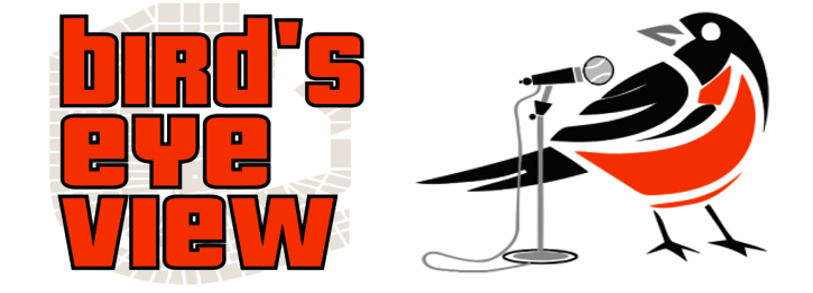How I Learned to Stop Worrying and Love the Rule 5 Draft
I rolled my eyes when I saw it: the Orioles, who have a long shopping list this offseason, selected an outfielder in the Rule 5 draft.
Instantly, the cynic in me kicked into high gear. The O’s added some guy in the Rule 5 draft. They re-signed Nolan Reimold, and they re-acquired L.J. Hoes. For a team that let a lot of outfield talent walk out the door in 2014, and replaced it with wishes, hopes, and maybes, the Orioles don’t seem to be learning from their mistakes. While the team waits for Chris Davis to determine how much land a man needs, they seem to be content to add more question marks to the roster, rather than add a proven player to fill a need. As we discovered in 2015, hope is not a method.
Then I took a deep breath.
The Rule 5 draft has been used by the Orioles to cover holes in their minor league system. Despite Dan Duquette’s line at FanFest yesterday that we should not
“believe the crap in national publications” that the Orioles system is thin, well… it is. It’s not that the Orioles don’t have good players. It’s that they don’t have enough of them. And this is where the Rule 5 draft comes in to play. The Rule 5 draft is used to fill that 25th spot on the roster, and works for the Orioles, because there are often not better options at AAA to fill that spot, than in the unprotected portion of some other team’s roster.
They aren’t all winners. After all, Michael Almanzar isn’t playing for the Orioles, despite the fact that he was the team’s 2013 pick, and was then re-acquired in 2014 after being unable to keep him on the roster the previous year. In fact, most of the picks haven’t worked. The Orioles have selected a player in the Rule 5 draft every year since 2000, when they selected Jay Gibbons from the Toronto Blue Jays. Very few of them are notable.
In the Showalter/Duquette regime, the Rule 5 draft has been used very effectively. T.J. McFarland has been much maligned in his Orioles tenure, but has not appeared in 105 games in the past three seasons by accident. McFarland has the ability to make spot starts, and to get lefties out. He is a versatile man in the pen for Showalter, and once having stuck in the organization for the first year, could be optioned. A flexible guy with options. Sounds like a valuable piece – when considering the 25th spot on the roster – to me.
Then there is Ryan Flaherty. Flash. Flare-Dog. Bringer of the F-Bombs. Flaherty is the poster child for the Rule 5 draft. Though it’s possible he would have been a starter during the Dark Period (hello, does anyone remember Luis Hernandez?), his role is that of super-sub. Flaherty has yet to hit the 20 home runs that our friends at Orioles Uncensored keep predicting, but he occasionally wanders his way onto the flag court. Of course, on the other hand, he barely hits his weight, and has totaled a career wRC+ of 75. His real value is in his glove. Flaherty can play nearly every position on the field. He is a quality backup at all four infield spots, and can plug a short-term hole in the corner outfield. Flaherty has even served as the emergency catcher on this club. This is they type of player the Orioles didn’t have lying around in the minors, but one who has played meaningful innings (and done it well) for two playoff teams in the past four seasons.
So, begrudgingly, I have to assume that this Joey Rickard guy might be useful. Duquette has had some hits in the Rule 5 draft, and frankly, I’d rather spend $50,000 and a league minimum on Rickard than to continue to pay an underachieving outfielder of the David Lough ilk. There’s a chance he was worth taking a flier on. Here’s what Chris Mitchell at FanGraphs wrote about the pick:
Due to the difficulty of identifying Rule 5 eligible players, I neglected to include Rickard in my Rule 5 preview. But if I had a time machine, I’d go back and make him the first player I mention. The former ninth-round pick had a break-out year in 2015, slashing .321/.427/.447 across three levels of the minors: High-A, Double-A and Triple-A. Rickard doesn’t hit for much power, but does an excellent job of controlling the strike zone: he walked nearly as often as he struck out last year. He also runs well, which should come in handy in the outfield. Rickard was pretty bad in 2014, so it remains to be seen if he sustains his 2015 breakout. But if he does, the Orioles might have hit the jackpot with this pick. Rickard was the only player from KATOH’s top 100 (#98) who was taken in the Rule 5.
Here’s the rub: Rickard can only succeed here if he is not the guy in the outfield. In order for this strategy to make sense, he needs to be at the bottom of a series of acquisitions that will make the Orioles a competitive team in 2016. Rickard could prove to be a useful fourth outfielder. And at best, might be a useful fourth outfielder with options for a few years, once he’s survived his Rule 5 year. He could also turn out to be a Michael Almanzer: nice in theory, but not a given in practice.

Only time will tell. But I would feel a lot better if the Orioles would give me something else to think about. The Winter Meetings may be over, but the offseason still has a long way to go.

One Reply to “How I Learned to Stop Worrying and Love the Rule 5 Draft”
Comments are closed.